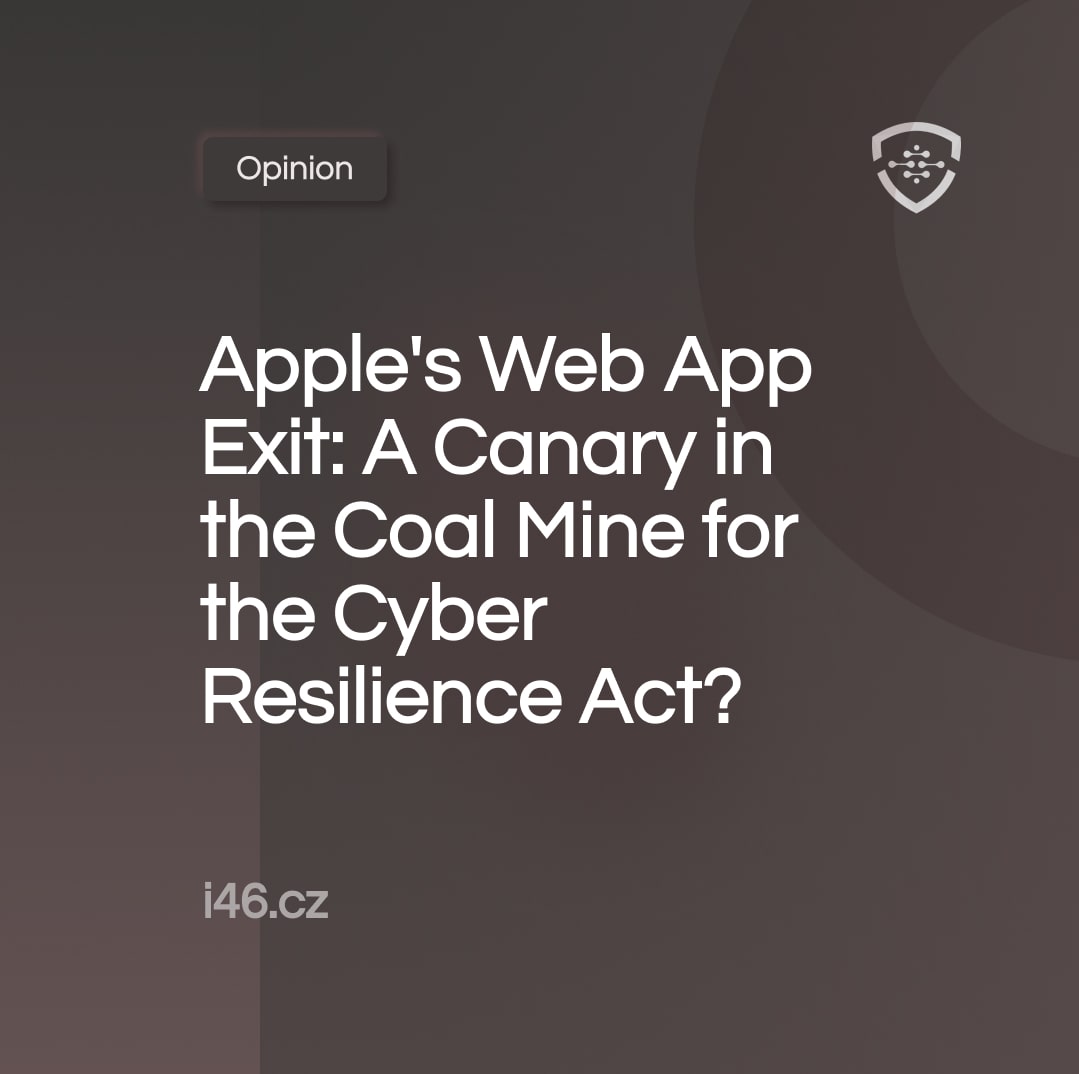Apple's Web App Exit: A Canary in the Coal Mine for the Cyber Resilience Act?

Apple’s recent decision to disable iPhone web apps in the EU, citing challenges in complying with the Digital Markets Act (DMA), has sent shockwaves through the tech world.
The move raises concerns about the potential impact of similar regulations on other companies and services. While it’s too early to predict specific actions, here are some areas where the Cyber Resilience Act (CRA) might lead to similar adjustments.
1. Targeted Feature Removals
Companies might remove specific features or functionalities from their EU offerings to simplify compliance.
Imagine cloud platforms restricting access to specific features (e.g: remote updates) or third-party integrations, or even IoT devices with disabled features, such as real-time data exchange with their cloud platforms.
2. Increased Geo-Blocking
Similar to Apple’s web app move, companies might geo-block entire services or features deemed too difficult to comply with the CRA’s stringent requirements. This could create a fragmented digital landscape where access and experiences differ based on location.
3. Compliance-Driven Mergers & Acquisitions
Smaller companies struggling with CRA compliance might merge with larger players, seeking economies of scale and expertise in navigating the regulatory landscape. This could lead to further consolidation in certain sectors.
4. Innovation Slowdown
Compliance burdens might discourage companies from experimenting with new features or services, particularly those with complex data handling or security implications. This could stifle innovation and hinder the development of next-generation technologies.
Takeaway: Balancing Security with Progress
The Cyber Resilience Act’s noble intentions of enhancing digital security are undeniable. However, Apple’s recent move highlights the potential unintended consequences of overly strict regulations. Striking a balance between robust protection and fostering innovation is crucial.
This is where partnering with a trusted compliance service provider such as i46 can make the difference, as we can automize compliance for your IoT devices and software
Here are some key considerations for policymakers and stakeholders:
- Targeted regulations: Instead of one-size-fits-all approaches, crafting regulations tailored to specific sectors and risk profiles could ensure effectiveness without stifling innovation.
- Open dialogue: Continuous engagement with industry leaders and experts can help identify potential challenges and develop workable solutions that prioritize security without sacrificing progress.
- Global collaboration: Harmonizing regulations across different regions can avoid fragmentation and ensure a level playing field for businesses operating internationally.
The Cyber Resilience Act is a significant step towards building a more secure digital future. However, we must navigate its implementation carefully, ensuring it protects users without inadvertently hindering the very innovation it aims to safeguard. By fostering open dialogue and embracing adaptability, we can create a regulatory framework that empowers both security and progress.
Join the Discussion:
Chat with i46’s CEO: Erel Rosenberg
Find out more information on the Cyber Resilience Act here



